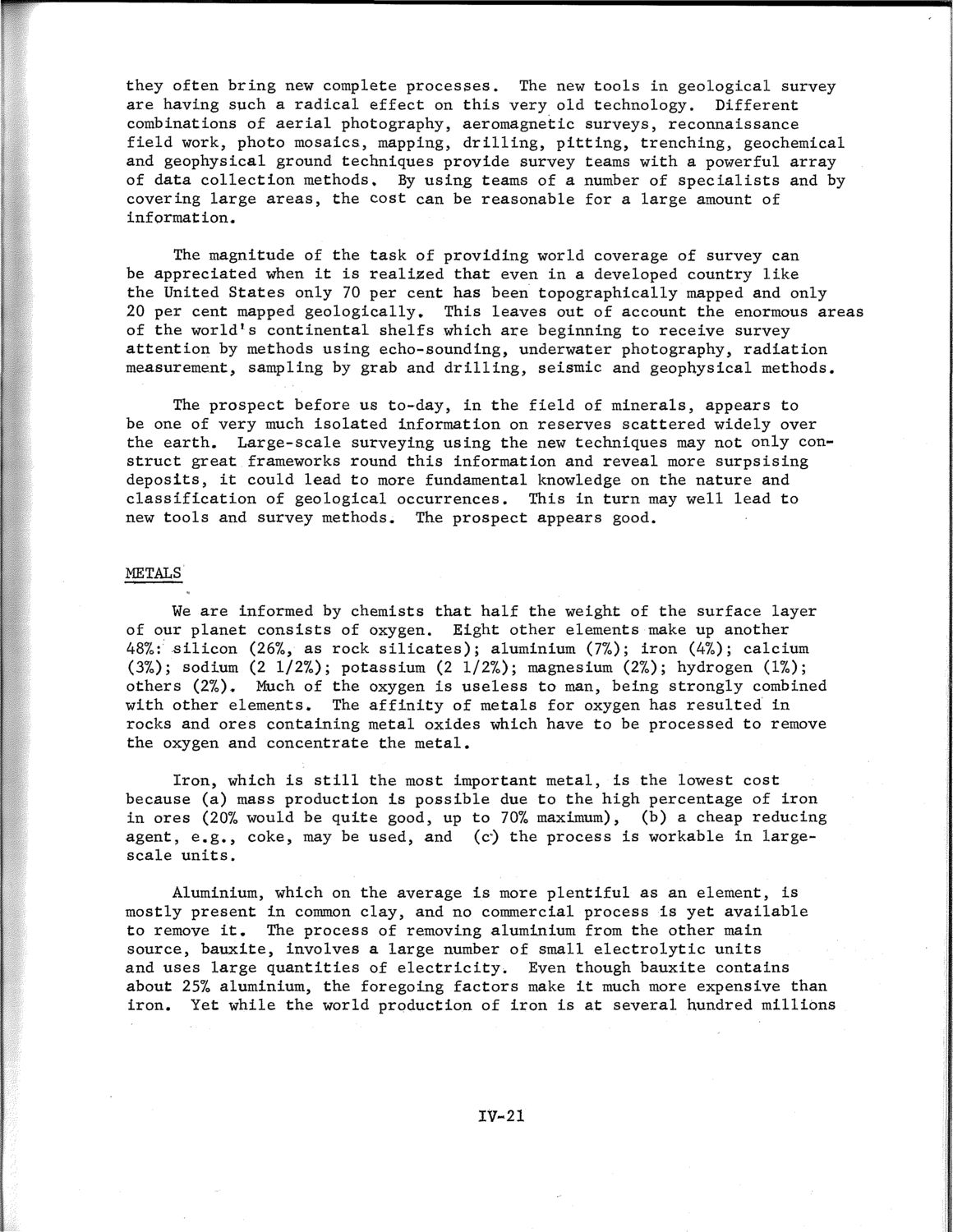| |
| |
Caption: SWE - Proceedings of the First International Conference of Women Engineers and Scientists
This is a reduced-resolution page image for fast online browsing.

EXTRACTED TEXT FROM PAGE:
they often bring new complete processes. The new tools in geological survey are having such a radical effect on this very old technology. Different combinations of aerial photography, aeromagnetic surveys, reconnaissance field work, photo mosaics, mapping, drilling, pitting, trenching, geochemical and geophysical ground techniques provide survey teams with a powerful array of data collection methods. By using teams of a number of specialists and by covering large areas, the cost can be reasonable for a large amount of information. The magnitude of the task of providing world coverage of survey can be appreciated when it is realized that even in a developed country like the United States only 70 per cent has been topographically mapped and only 20 per cent mapped geologically. This leaves out of account the enormous areas of the world's continental shelfs which are beginning to receive survey attention by methods using echo-sounding, underwater photography, radiation measurement, sampling by grab and drilling, seismic and geophysical methods. The prospect before us to-day, in the field of minerals, appears to be one of very much isolated information on reserves scattered widely over the earth. Large-scale surveying using the new techniques may not only construct great frameworks round this information and reveal more surpsising deposits, it could lead to more fundamental knowledge on the nature and classification of geological occurrences. This in turn may well lead to new tools and survey methods. The prospect appears good. METALS We are informed by chemists that half the weight of the surface layer of our planet consists of oxygen. Eight other elements make up another 487°: silicon (267., as rock silicates); aluminium (77.); iron (47.); calcium (37.); sodium (2 1/27,); potassium (2 1/27.); magnesium (27,); hydrogen (1%); others (27>). Much of the oxygen is useless to man, being strongly combined with other elements. The affinity of metals for oxygen has resulted in rocks and ores containing metal oxides which have to be processed to remove the oxygen and concentrate the metal. Iron, which is still the most important metal, is the lowest cost because (a) mass production is possible due to the high percentage of iron in ores (207. would be quite good, up to 707. maximum), (b) a cheap reducing agent, e.g., coke, may be used, and (c*) the process is workable in largescale units. Aluminium, which on the average is more plentiful as an element, is mostly present in common clay, and no commercial process is yet available to remove it. The process of removing aluminium from the other main source, bauxite, involves a large number of small electrolytic units and uses large quantities of electricity. Even though bauxite contains about 257. aluminium, the foregoing factors make it much more expensive than iron. Yet while the world production of iron is at several hundred millions IV-21
| |